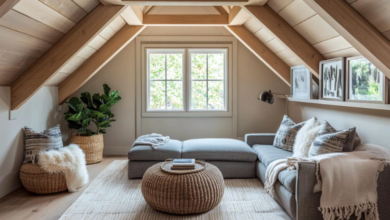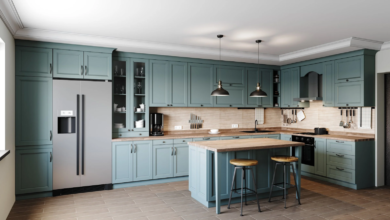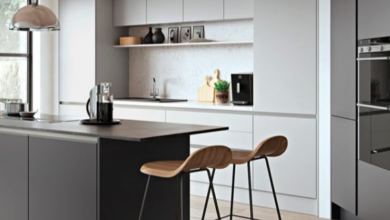Rooflights UK: A Complete Guide to Natural Light for Your Home

When it comes to transforming the atmosphere of a home, few architectural features are as effective as rooflights. These glazed openings, fitted directly into a roof, bring natural light into areas that traditional windows often cannot reach. In the UK, where daylight hours can be limited and overcast skies are common, the addition of rooflights is more than a design choice. It is an investment in comfort, efficiency, and wellbeing.
Rooflights, sometimes called skylights, are used in a wide range of settings, from residential properties to commercial spaces. Whether you are renovating a loft, adding a new extension, or modernizing a kitchen, rooflights can make a remarkable difference. In this guide, we will explore the types of rooflights available in the UK, their benefits, practical considerations for installation, maintenance tips, and why they are becoming an increasingly popular choice for homeowners.
Why Rooflights Are Popular in the UK
Increasing Daylight Indoors
In the UK, long winters and frequent cloudy days can leave homes feeling dark and enclosed. Rooflights allow natural sunlight to pour directly into interiors, creating brighter and more uplifting spaces. This is especially beneficial for areas such as lofts, kitchens, and stairwells that may otherwise lack windows or receive minimal daylight.
Improving Health and Wellbeing
Exposure to natural light has been shown to improve mood, regulate sleep patterns, and increase productivity. For homeowners who spend significant time indoors, rooflights offer a way to harness these health benefits.
Enhancing Home Value
Modern buyers often prioritize homes that feel spacious, bright, and energy efficient. Adding rooflights can make a property more appealing and increase its market value, making them a worthwhile investment for the future.
Reducing Energy Consumption
By increasing natural daylight, rooflights reduce the need for artificial lighting. Many models are designed with advanced glazing that improves insulation, helping to maintain comfortable indoor temperatures and lowering heating costs.
Choosing the Right Rooflight Supplier
When searching for rooflights UK homeowners should look for suppliers that meet recognized British standards for safety, energy efficiency, and durability. Warranties and after-sales support are important considerations, as is the availability of expert advice on installation and maintenance. A reputable supplier will provide peace of mind and ensure you receive a product that performs as expected.
Types of Rooflights
When selecting rooflights in the UK, it is important to consider the different styles available. Each type has its unique features and benefits depending on the intended use.
Fixed Rooflights
Fixed rooflights are designed solely to let light in. They do not open but are ideal for spaces where ventilation is not necessary, such as hallways or stairwells.
Opening Rooflights
These rooflights combine natural light with fresh air. They are perfect for kitchens, bathrooms, and lofts where airflow is essential. Opening models can be manual or electronically operated, with some advanced options including rain sensors.
Flat Rooflights
With a clean, minimalist appearance, flat rooflights are flush with the roof surface. They are popular in contemporary extensions and provide uninterrupted views of the sky.
Lantern Rooflights
Lantern rooflights create a striking architectural feature. Their pitched design allows light to flood into the room while adding height and a sense of grandeur, making them ideal for orangeries or large open-plan extensions.
Walk-On Rooflights
Walk-on rooflights are built with reinforced glass that can safely withstand foot traffic. They are often used on flat roofs or terraces where they serve a dual purpose, providing light below while maintaining usable outdoor space above.
See also: Small Home, Big Style: Space-Saving Design Trends
Factors to Consider Before Installing Rooflights
Building Regulations
In most cases, rooflights fall under permitted development rights in the UK. This means they can often be installed without planning permission, provided they meet specific conditions. However, if you live in a listed property or a conservation area, you may need approval. Always check with local authorities before starting an installation.
Orientation and Positioning
The direction your rooflights face affects the type of light you receive. South-facing installations bring in maximum sunlight, while north-facing ones provide consistent but softer illumination. Placement should also take into account the pitch and design of the roof.
Glazing Options
Double and triple glazing are commonly available, each offering different levels of insulation and noise reduction. Some rooflights include coatings to reduce glare, filter UV rays, or improve energy efficiency. For safety, toughened or laminated glass is often recommended.
Size and Proportion
The size of the rooflight should be proportional to the room. A large rooflight in a small room may overwhelm the space, while a smaller one in a large extension may not deliver the desired impact.
Ventilation Requirements
If airflow is a priority, opt for an opening rooflight. For ease of use, motorized options can be controlled with a switch or remote control, and some even close automatically when it rains.
The Installation Process
Professional Installation vs DIY
While some rooflights are marketed as suitable for DIY installation, most projects require professional expertise. Proper installation is critical to ensure the rooflight is secure, watertight, and compliant with building regulations. Incorrect installation can lead to leaks and structural issues.
Preparing the Roof
Before fitting rooflights, assess whether your roof requires structural reinforcement, particularly if you are installing a large or heavy unit. Clear the area around the installation site and protect interiors from dust and debris.
Safety Considerations
Installing rooflights involves working at height, which requires careful planning and the right equipment. Scaffolding, protective gear, and adherence to safety regulations are essential for anyone carrying out the work.
Caring for Rooflights
Rooflights are low-maintenance, but regular care ensures they remain in excellent condition and perform well.
- Cleaning the Glass: Dirt, moss, and bird droppings can reduce light transmission. Clean the glass with non-abrasive cleaners and soft cloths.
- Checking Seals and Flashing: Inspect seals regularly to prevent leaks and drafts. Replace worn components promptly.
- Maintaining Mechanisms: For opening rooflights, lubricate hinges and test electric controls periodically to ensure smooth operation.
Costs and Budgeting
The price of rooflights in the UK varies based on size, design, glazing type, and features. Fixed rooflights are generally the most affordable, while lantern or walk-on designs tend to be more expensive due to their complexity. Installation costs also depend on the type of roof and the difficulty of the project.
Although the initial cost may seem high, the long-term benefits make rooflights a worthwhile investment. Improved energy efficiency, increased property value, and enhanced quality of life can outweigh the upfront expense.
Creative Applications of Rooflights
Rooflights are versatile and can be incorporated into almost any part of a home. Here are a few inspiring ideas:
- Loft Conversions: Brighten a previously unused attic by installing rooflights to make it a livable bedroom, office, or studio.
- Kitchens: Place rooflights above a kitchen island or dining table to create a welcoming and sociable atmosphere.
- Bathrooms: Rooflights provide daylight and privacy in bathrooms where vertical windows may not be suitable.
- Hallways: Even narrow hallways can feel more open and inviting when rooflights are added.
- Home Offices: Natural light can improve focus and reduce eye strain, making rooflights an excellent choice for modern work-from-home spaces.
Environmental Benefits
Sustainability is an important factor for many homeowners. Rooflights contribute to a greener lifestyle by reducing reliance on artificial lighting and lowering energy use. Many are built with recyclable materials and advanced glazing that minimizes heat loss. By investing in rooflights, you not only improve your home but also make an environmentally conscious choice.
Conclusion
Rooflights have become an essential feature in modern UK homes, offering a blend of style, practicality, and sustainability. They brighten interiors, improve wellbeing, and add value to properties. From fixed and flat rooflights to lantern and walk-on designs, there is a style to suit every home and budget.
For anyone considering a home renovation or extension, rooflights are a versatile and impactful option. By carefully selecting the right type, ensuring proper installation, and maintaining them well, homeowners can enjoy the benefits of natural light for many years.




